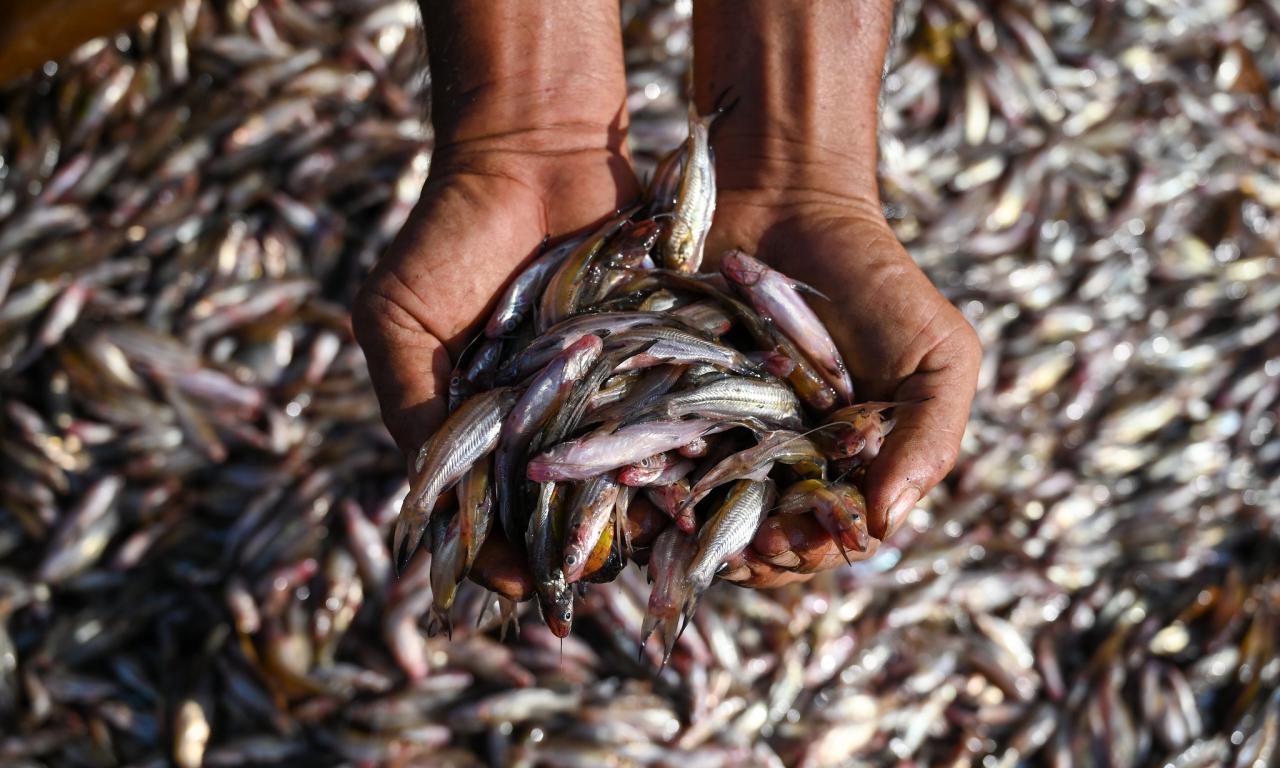
- Small fish are a cost-effective, nutrient-rich solution for global hunger and malnutrition, according to a new paper from FAO.
- Shakuntala Haraksingh Thilsted, World Food Prize Laureate and CGIAR’s Nutrition Impact Platform Lead, emphasizes in the paper's foreward the crucial role of small-scale producers and diverse diets, including small fish, in addressing global food insecurity, hunger and malnutrition.
- WorldFish's ongoing research and initiatives in countries like India and Cambodia spotlight the significant imact of small fish in combatting malnutrition, empowering women and promoting diverse, healthy diets.
Following decades of progress in reducing global hunger, food insecurity and malnutrition, this trend is now reversing. The COVID-19 pandemic, extreme weather events, conflicts and fuel crises are taking their toll on the production, distribution and consumption of healthy foods. These are worldwide issues, yet a key resource for addressing them could come in a tiny package.
Small fish have long been a staple food in many low- and middle-income countries, yet their potential for addressing malnutrition and food security is only beginning to be realized. A new technical paper from the UN’s Food and Agriculture Organization (FAO) takes a broad look at all things small – from the fish themselves, to the small-scale fishers who catch them, the small quantities they can be sold in, their (typically) low cost and the rich micronutrients they contain.
The Importance of Small Fish in the Face of Growing Challenges
The nutritional value of small fish can be extraordinary, defying their tiny size – they are rich in animal proteins, omega-3 fatty acids and micronutrients and as they are often eaten whole, consumers benefit from micronutrients found in the head, bones, and other parts that may be discarded in larger fish. Consuming small fish also enhances the absorption of iron and zinc from fruits and vegetables. Accessibility is also important – small fish are often cheaper than other animal-source foods and can be purchased in small quantities.
The new FAO paper “Small fish for food security and nutrition” makes a compelling case that food insecurity and poverty can also be addressed through the harvesting and production of small fish, which form an important part of local livelihoods, particularly in coastal communities. Arguing that the small-scale fishers and local food systems that put these fish on the table have proven to be particularly resilient to global shocks, the paper concludes that globally, small fish are an undervalued resource for food security, nutrition and livelihoods, and could contribute to multiple Sustainable Development Goals.
“While the progress to end food insecurity, hunger and malnutrition in the past has been attributed to the intensification of large-scale food production and the increased availability of a few staple foods and animal-source foods, there is now greater attention being given to the role of small-scale producers and the importance of the diversity of foods to nourish all people and our planet,” says Shakuntala Haraksingh Thilsted, World Food Prize Laureate and CGIAR’s Nutrition Impact Platform Lead, in the paper’s foreword.
“Small fish are still relatively affordable foods compared to other animal-source foods, in many low- and middle-income countries, and can be purchased in small quantities, making them more accessible to the poor,” explains Thilsted, reflecting on her research while working at WorldFish on the nutritional composition of small native fish species commonly consumed in Bangladesh and Cambodia.
Small Fish Research Continues at WorldFish
WorldFish continues its pioneering research on small fish to tackle malnutrition and livelihoods while also empowering women. In India, for example, where more than a third of children have stunted growth, WorldFish scientists innovated mass breeding of mola, an indigenous small fish, rich in micronutrients. The project, integrated with Odisha state government’s Mission Shakti initiative for women’s empowerment, produced more than 7 million mola hatchlings between June and September 2022, which were distributed to women’s self-help groups, improving access to nutrient-rich food particularly for women and children in rural communities.
In Cambodia, indigenous small fish were successfully integrated into homestead ponds with carp and vegetable production, diversifying diets with nutrient-dense small fish while adding income from surplus fish.
A Balanced Approach
The paper calls for decision-makers and stakeholders to take a more holistic approach—balancing economic value with a greater emphasis on the nutritional value and socioeconomic impacts of small fish to realize their full benefits.
“Innovations, such as those developed and distributed by WorldFish, have an important role to play in ensuring that small fish play a large part in supporting food security, healthy diets and livelihoods, particularly for the world’s most vulnerable communities,” says Wanjiku Gichohi, WorldFish’s new Nutrition and Public Health Impact Lead, as she takes stock of work ahead on realizing the untapped potential of small fish for greater impact.
